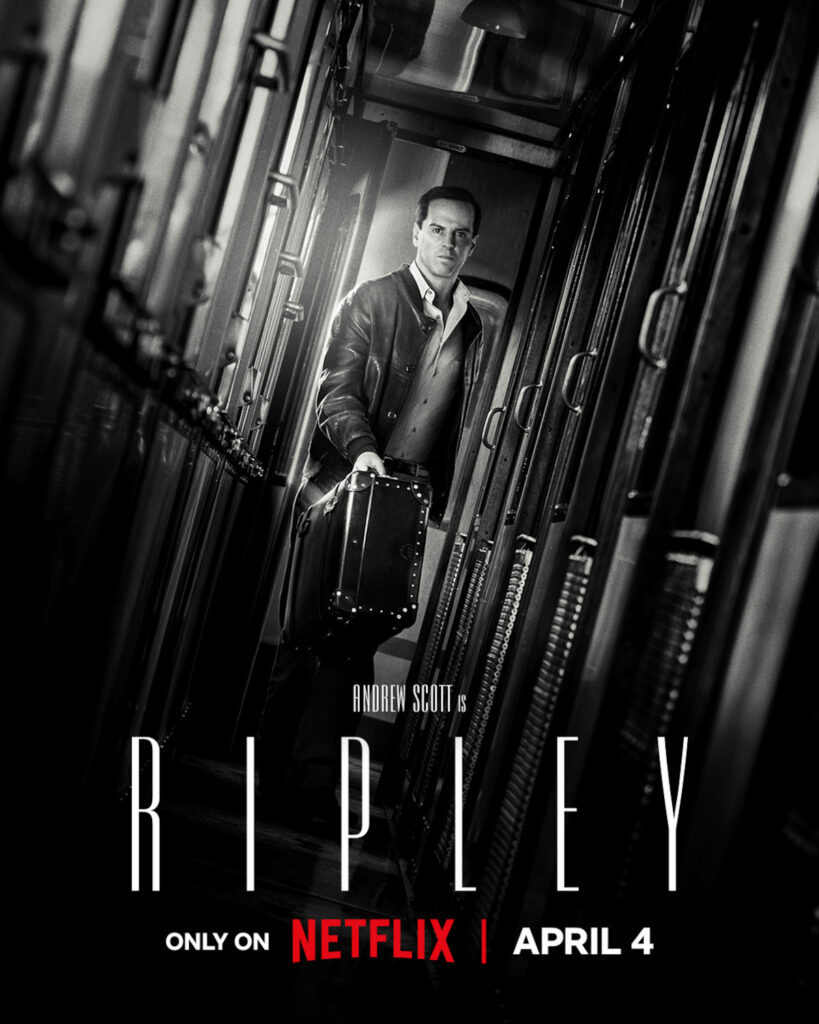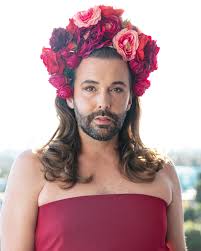Is Tom Ripley Gay? This question has plagued every adaptation of Patricia Highsmith’s book

Ripley: Release Date, Cast, and Photos of Andrew Scott - Netflix Tudum
Is Tom Ripley gay? Readers have been perplexed for over 70 years by The Talented Mr. Ripley, the story of an ambitious but timid young man who brutally kills a wealthy American expatriate, and its four sequels, which she wrote intermittent of 36 years. It has presented a difficulty to American, Canadian, German, Italian, French, and British filmmakers who have attempted to adapt Ripley, including the Netflix adaptation produced by Steven Zaillian. This even perplexed the lesbian creator of Ripley, who had a tumultuous experience with queer sexuality. In a 1988 interview, Highsmith seemed intent to dismiss the idea before beginning work on Ripley Under Water, the book’s conclusion. “I don’t think Ripley is gay,” she said, according to the interviewer, “adamantly.” Indeed, he enjoys attractive males. Subsequent works depict him as married. In terms of sex, he is not strong. Still, he is successful in bed with his spouse.
It’s a serious question. The most complex and unsettling of Ripley’s several murders, the one that killed Dickie Greenleaf, has always been connected to his sexual orientation. Is it because Tom understands what Dickie thinks of him, wants to be like Dickie, loves Dickie, or can’t take it when Dickie doesn’t care for him that he kills Dickie? Generally, I accept the intent of the writer and defer to them when it comes to factual specifics. Given the context, it’s possible that Highsmith, a cantankerous, drunken misanthrope who was past her prime when she made that comment, forgot or sought to deny her first, highly suggestive portrayal of Tom Ripley.
Highsmith makes arguments in Mr. Ripley’s Talented. Man alone Tom shares a room with a window dresser and lives on the outskirts of New York. Prior to that, Tom still retains his apartment key and shared a home with a wealthy and controlling sugar daddie whom he refers to as “an old maid.” He generally calls himself by the names of homosexual males when introducing himself to Dickie. He recalls his aunt calling him “Sissy!” with bitterness. A brat from the beginning. Just like his father!Tom, who obsessively rehearses his public interactions and relives his public humiliations, remembers being shamed by a friend for a rehearsed line he liked to use frequently at parties: “I’m not sure if I like men or women, so I’m considering giving them both up.” This was a particularly painful moment for Tom. The way he presented it has “always been excellent for a laugh,” but he acknowledges that “there was a lot of truth in He still has the desire to be an actor and can make a small audience laugh with his own monologues. It should be noted that all of his unique characters are female.
The first mentions of homosexuality in literature date back to 1955, albeit they are typically presented as major issues, threats, or tragedies. For a masculine character, this was an extremely specialized collection of ornaments. The second of its eight episodes features Zaillian’s Ripley painstakingly recreating a graphic scene in which Tom finds Tom alone in his bedroom while pretending to be him wearing his clothes. Dickie, the shady playboy whose opulent permanent-vacation life in the Italian coastal town of Atrani with his girlfriend, Marge, has been infiltrated by Tom, is the one who finds Tom. Highsmith and Zaillian claim that it is just as embarrassing for Tom as getting caught in drag as it is just drag—simply drag—that is tinged with the desire to become or own the object of someone’s adoration and envy. Seeing it as a potential sexual danger, Dickie tells Tom, “I’m not queer,” and then savagely continues, “Marge thinks you are.” In the book, Tom becomes paler. Though he faints, he angrily denies it. No one had ever said it directly to him, at least not in this manner, according to Highsmith. This was the fear of being discovered, disguised as the embarrassment of being misinterpreted, and no gay reader in the mid-1950s could have missed it.
Highsmith seems scared as well. Fifteen years later, in Ripley Under Ground, her second book, she transformed Tom into a soigné country gentleman, content to live a quiet life in France with a gullible wife. The three directors of The Talented Mr. Ripley approached the task of creating a sequel in a way that was appropriate for their own eras, but none have been able to capture the icy, demanding horror of the original novel. One of the most disturbing characters in American crime fiction is finally totally and uncompromisingly portrayed by Zaillian’s ice-cold, diamond-hard Ripley.
René Clément’s drama in French, Purple Noon, which stars Alain Delon as the ridiculously attractive but incredibly distant Ripley, is well-known for its sun-drenched aura of unending laziness and the detached malaise that pervaded the decade. The problem lies in the fact that a ridiculously attractive Ripley has never felt deeply ashamed of herself, and a really distant Ripley finds it impossible to connect with anyone. The 1960 film Purple Noon refuses or is unable to investigate Ripley’s seeming homosexuality. Delon is a less complex character type, a lovely and irresistible suave criminal who, as if even France had to submit to the hoariest demands of the Hollywood Production Code, gets his due by the closing credits, even though the movie hints that no man or woman could not find him alluring. Delectable noir in the daylight without any scary components.
Although The Talented Mr. Ripley, directed by Anthony Minghella in 1999, is far better and far different from the current Ripley, it does show how complex and multifaceted Highsmith’s story is. A dedicated Actor Gwyneth Paltrow plays a lively and emotional Marge; Matt Damon plays a startlingly fine Tom Ripley, ingratiating and charming but always just a little bit clumsy, needy, or misguided; Jude Law, at his finest, is such an effortless golden kid that he makes Damon’s Tom seem dim and dull.
If 1955 culture had accepted it, Minghella shrewdly and progressive-circa-1999 thinks Highsmith would have depicted Tom as blatantly gay, and he accepts the theory. He presents Tom Ripley as being at least somewhat unstable due to his desire to be with Dickie. He turns Peter Smith-Kingsley (Jack Davenport), a character Highsmith had hardly begun to develop, into a major one with whom Ripley has fallen in love after two murders and a luxurious and well-funded European life—a significant divergence from the novel. It’s a dreadful ending for both. A broken-hearted Tom murders Peter, his third murder—one more than in the novel—rather than running the danger of being found out. This is supposed to be seen as the tragedy of his life: that he will always have to renounce the identity he selected to achieve happiness, despite having discovered the one that would have made him happy (the gay guy). Given that Highsmith would never have visited this location, it’s fantastic that these films are interpretations. Maybe Minghella explored the palace in the book and peeped through Highsmith’s closed doors to see what lay beyond. The end product is not the scariest Ripley, but rather the most sympathetic and caring.
Zaillian hardly seems to care about us. Coastal Italy is transformed into a daunting vertical maze, alternating between paradise, purgatory, and inferno, by the amazing cinematographer Robert Elswit. Elswit makes every black-and-white shot a stunning, tense, precise duel between light and shadow. Tom Ripley struggles throughout, always seeming to be at the bottom of yet another flight of stairs.
Part of Zaillian’s talent and evidence of his deep comprehension of the book is the fact that his significant departures from Highsmith put his work closer to her darkest implications. The most obvious change is how old Tom and Dickie are, but there are other changes as well. In the book, Dickie is the son of a rich man whose father is concerned that he has taken a sowing-wild-oats trip to Europe after graduating from college, and Tom is a young con artist who steals mail and poses as a collection agent to con unsuspecting people out of just enough odd sums to get by. These plot lines are retained in the miniseries, albeit Johnny Flynn, who plays Dickie, is 41 and Andrew Scott, who plays Ripley, is 47. They look like they are 35 and 40 on television.
This changes how we view the characters from the first episode. From a small, lonely shoebox flat in New York that hardly accommodates a prison cot bed, Ripley grimly operates his penny-ante hustle (he has never invited guests). We discover that Ripley is a failure. This is the culmination of his long career. In an early scene in the bank, he looks worn out after nearly getting caught. Most likely, years ago, he buried his dreams. Dickie, the golden kid, is a dawdler who lives off his father’s wealth, paints badly, and plays the romantic wooer to a girl who is devoted to him but likely realizes he won’t achieve to much.
Tom’s aging aids Zaillian in presenting a strong case for his sexuality in line with Highsmith’s vision—if not her rejection of it. Unlike the Ripley of 1999, the Ripley of 2024 is queer in the best and most traditional senses. Elswit’s continuously creative lighting of Ripley’s basic expressions, small, ambiguous mouth, and high, smooth forehead often makes him look weird, like a Daniel Clowes or Charles Burns drawing. Scott’s immaculate portrayal finds a thousand shades of moon-faced blankness in Ripley’s sociopathy. Scott’s Ripley needs to rehearse every utterance, smile, and conversation. It appears that he no longer feels the need for sex. Is he unusual? I’m not sure, Marge writes to Dickie (who is actually Tom, playing his murder victim). “He’s not normal enough, in my opinion, to have a sexual life of any kind.” Zaillian based this almost verbatim on the book. Marge understands that he and Scott are giving us a peculiar Ripley. (She continues, “All right, he might not be queer [meaning gay]” in the book. The worst thing is that he’s just a nobody. Because it denies us passion as an explanation, Ripley’s potential asexuality—or disgust at any shown sexuality—makes his murder of Dickie even more horrifying. In this version of The Talented Mr. Ripley, Ripley might not be aware of the reason behind his murder of Dickie.
Upon learning that Zaillian, who penned and oversaw every episode, was adapting Ripley, I pondered whether he would swap out the great equalizer of 1999—sexual identity—for a more contemporary one, namely economic inequality. In certain scenes, Minghella’s adaptation of the story played with the idea, depicting Damon’s Ripley as a man driven insane by his nose pressed up against the glass separating him from a world of privilege (and from others who openly mocked his gaucheries). Every person, object, room, and vista he encountered was so lush, beautiful, and gleaming. Zaillian doesn’t, which is fortunate because Saltburn, a movie that was influenced by Ripley, made good use of such cliches. Whether intentional or not, filming Ripley in black and white lessens the want to use Italy as a setting for opulent erotica and turn Tom into a stand-in for the wealthy. This Italy is amazing, but even its most beautiful artifacts appear to be in danger from moisture, decay, or decomposition. Zaillian’s Ripley aspires to Dickie’s life of luxury, fine things, and art—though it’s unclear what goes through Ripley’s mind when he views so many Caravaggios. He conquers the need to make Dickie and Marge not like Tom’s lack of wealth, to treat the staff badly, or to provide an excuse for his demise. This Tom might be easier to understand today if he weren’t a closet victim or a class warrior. He exists in his own world.
However, Zaillian’s use of sexuality plays into another of his instinctive leaps, giving any Ripley adapter more options than just money. He chose to present Freddie Miles, Dickie’s friend and Tom’s immediate adversary, as a chilly, sexually ambiguous, gender-fluid before it was a term threat to Tom’s stability. Tom views Freddie as a dangerous person who can see too much, too clearly, while Freddie views him as a wretched poser and probably a closet case. They detest one other from the start. Naturally, this results in murder. In an attempt to dispose of Freddie’s body, Tom drags his upright corpse—his bloodied head covered by a hat—down a nighttime street while posing as an intoxicated friend. When someone approaches, Tom turns away, slams his body against Freddie’s, and gives him a fierce kiss as an alibi. Tom only engages in this necrophiliac interlude during Ripley’s eight hours. Highsmith would have grinned, I imagine.
Any The Talented adaptation Zaillian supplies Mr. Ripley with a few dark gags, one of which is a cameo from John Malkovich, the current king/queen of sexual ambiguity (as well as a previous Ripley in 2002’s Ripley’s Game), as a character who doesn’t really emerge until the second book. He also reminds us how fragile and easily overturned Ripley’s entire plan by providing a hilarious twist at the conclusion that suggests Ripley might not survive to the sequel. Taking the word “talented” out of the title was perhaps Zaillian’s most audacious and astute move, since Ripley is by no means a genius. He does brilliant impressions of editors, writers (all those letters!), painters, art critics, and wealthy men throughout the show. He crafts a Tom who, when not under observation, is so devoid of human emotion that his primary ability is laser-like concentration. It’s possible that what we witness him getting away with is the first thing he’s competent at (the conclusion of the program suggests that extremely good might not be sufficient). Tom isn’t a cunning strategist; rather, he’s just a Tom who can never seem to catch up.
Tom’s sexual orientation is a mystery to the end of the book according to Zaillian. Zaillian is obviously uninterested in Highsmith’s decision to turn Tom into a roguish heterosexual art fraudster before to the second novel, and it has never been a compelling one. At the conclusion of Ripley, a detective asks Tom to describe Dickie. “I told him I found him pathetic and that I wanted nothing more to do with him,” he says to the private eye, revealing that Dickie was in love with him. What will stick with me, though, is the devastating conclusion he makes right before that line: “Everything about him was an act.” Ultimately, Scott and Zaillian present us with a methodical, ordinary, meek, and terrifying Ripley for a time when evil is so frequently committed by rational, even-tempered human automatons.




